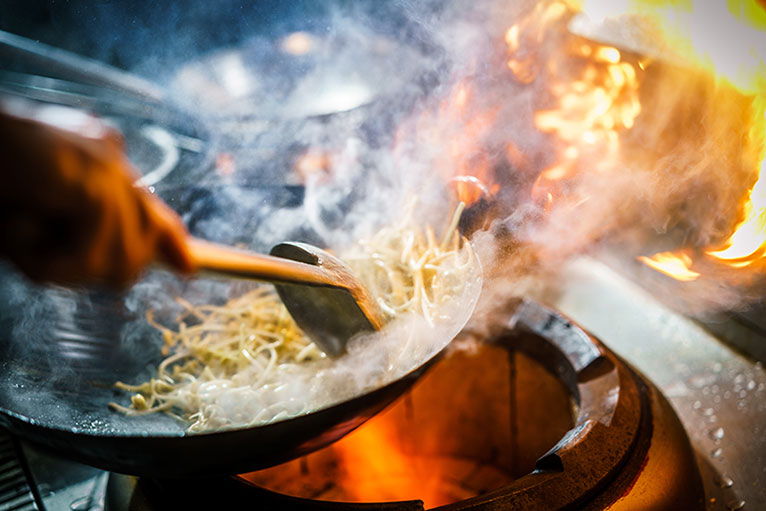Mechanical engineers calculate cooling and heating loads for commercial spaces in order to size the ventilation systems. The type of space plays a key role in determining necessary ventilation requirements. Commercial kitchens are unique in they operate year round and cooling is almost always required, even during the colder winter months. This is due to the heat loads generated in a commercial kitchen from the cooking processes.
The modes of heat gain to a space may include:
- solar radiation through transparent surfaces
- heat conduction through exterior wall and roofs
- heat conduction through interior partitions, ceilings, and floors
- heat generated within the space by occupants, lights, and appliances
- energy transfer as a results of ventilation and infiltration of outdoor air
- miscellaneous heat gains
However, in commercial kitchens, cooking processes contribute the majority of heat gains to the space.
Sensible heat (or dry heat) is directly added to the conditioned space by conduction, convection and radiation. Latent heat gain occurs when moisture is added to the space (e.g., from vapor emitted by occupants, equipment and processes). Space heat gain by radiation is not immediate. Radiant energy must first be absorbed by the surfaces enclosing the space (walls, floor, and ceiling) and by the objects in the space (furniture, people, etc.). As soon as these surfaces and objects become warmer than the space air, some of the heat is transferred to the air in the space by convection.
To calculate a space cooling load, detailed building design information and weather data at selected design conditions are required. Generally, the following information is required:
- building characteristics
- configuration (e.g., building location)
- outdoor design conditions
- indoor design conditions
- operating schedules
- date and time of day
Cooking can be described as a process that adds heat to raw or precooked food. As heat is applied to the food, effluent is released into the surrounding environment. This effluent release includes water vapor, organic material released from the food itself, and heat that was not absorbed by the food being cooked. Some forms of reheating, such as re-thermalizing limit the effluent released to the space but still emit water vapor to the surrounding space.
The hot cooking surface (or fluid, such as oil) and produce vapors create thermal air currents (typically called a thermal plume) that are received or captured by the hood and then exhausted. If this thermal plume is not captured and contained by the hood, they become a heat load to the space. The velocity of these thermal plumes depends largely on the surface temperature of the cooking equipment, and varies from 25 feet per minute over some steam equipment, to 200 feet per minute over some char-broilers. Because of this variation, cooking equipment is typically classified in four categories: light duty (such as ovens, steamers, and small kettles up to 400°F(204°C), medium duty (such as large kettles, ranges, griddles, and fryers up to 400°F(204°C)), heavy duty (such as broilers, char-broilers, and woks up to 600°F(315°C) and extra heavy duty (such as solid-fuel-burning equipment up to 700°F(371°C). By far, in a commercial kitchen, cooking contributes to a majority of the heat loads in the space.

